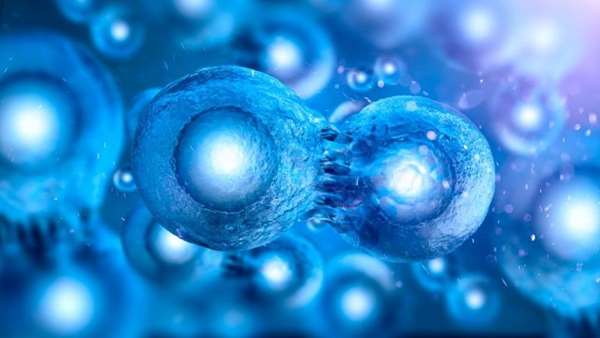Maintaining the unlimited potential of stem cells
Embryonic stem cells (ESCs) are the very definition of being full of potential, given that they can become any type of cell in the body. Once they start down any particular path toward a type of tissue, they lose their unlimited potential. Scientists have been trying to understand why and how this happens in order to create regenerative therapies that can, for example, coax a persons own cells to replace damaged or diseased organs.
Embryonic stem cells (ESCs) are the very definition of being full of potential, given that they can become any type of cell in the body. Once they start down any particular path toward a type of tissue, they lose their unlimited potential. Scientists have been trying to understand why and how this happens in order to create regenerative therapies that can, for example, coax a person"s own cells to replace damaged or diseased organs.
Scientists from the Salk Institute discovered a new protein complex that keeps the brakes on stem cells, allowing them to maintain their indefinite potential. The new complex, called GBAF and detailed in Nature Communications on December 3, 2018, could provide a future target for regenerative medicine.
"This project started as an exploration of embryonic stem cell pluripotency, which is this property that allows ESCs to become all different cell types in the body," says Diana Hargreaves, an assistant professor in Salk"s Molecular and Cell Biology Laboratory and the senior author of the paper. "It"s very important to know how various networks of genes control pluripotency, so finding a previously unknown protein complex that plays such an important regulatory role was very exciting."
Every cell in the body has the same set of DNA, which contains the instructions for making every possible cell type. Teams of large protein complexes (known as chromatin remodelers) activate or silence genes, directing an embryonic stem cell down a particular path. Like a team of contractors planning to renovate a house, these protein complexes contain varying subunits, the combination of which changes the physical shape of DNA and determines which genes can be accessed to direct the cell to become, for example, a lung cell or brain cell.
Hargreaves"s team wanted to better understand how these subunits come together and how particular subunits might dictate a complex"s function. So they turned to a protein called BRD9, which was known to associate with the BAF family of chromatin remodelers and was suspected to be a subunit. The team applied a chemical inhibitor of BRD9 to dishes of embryonic stem cells and performed a series of experiments to comprehensively analyze the cells" pluripotency in association with changes in BAF complex activity.
The group was surprised to discover that BRD9 acts as a brake on embryonic stem cell development. When BRD9 is working, cells retain their pluripotency, whereas when its activity is inhibited cells start moving on to the next stage of development. Further work to identify which BAF complexes were at work in the cells revealed another surprise: BRD9 was part of an as-yet-unknown BAF complex.
"For me, what was most exciting about our study was the fact that we had discovered a new BAF complex in embryonic stem cells," says Jovylyn Gatchalian, a Salk research associate and the paper"s first author.
Adds Hargreaves, "What we see with this work is that there"s biochemical diversity at the level of individual variants of the BAF complex that allows for greater regulatory control. Understanding the complexities of that control is going to be key to any regenerative therapies."
Reference:https://www.nature.com/articles/s41467-018-07528-9





ارسال به دوستان